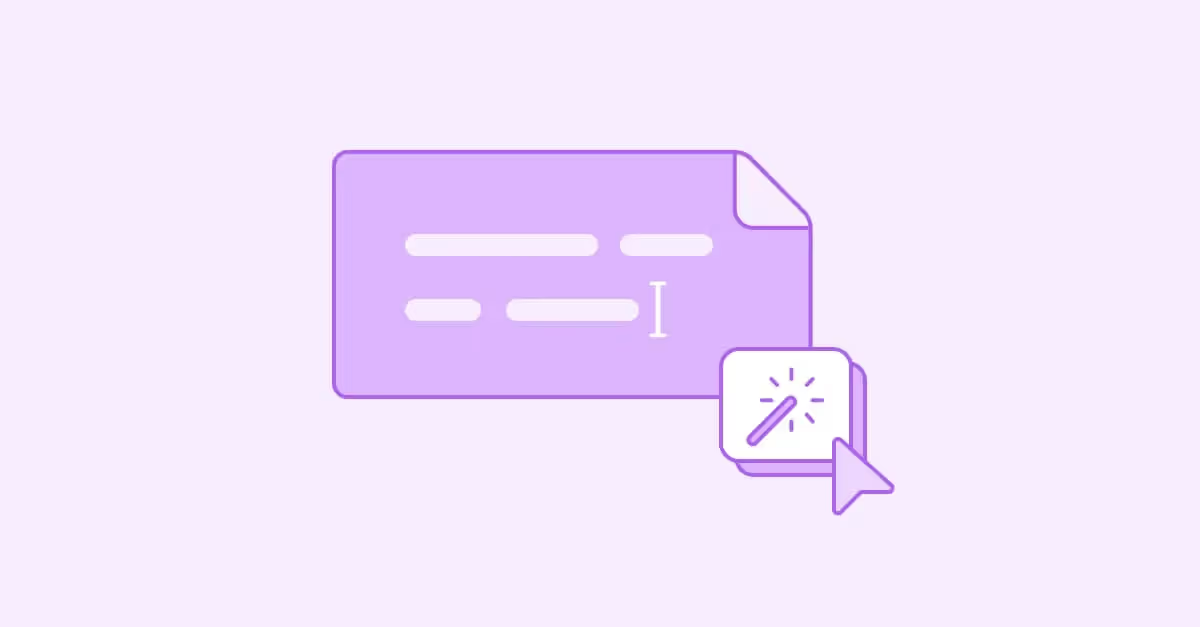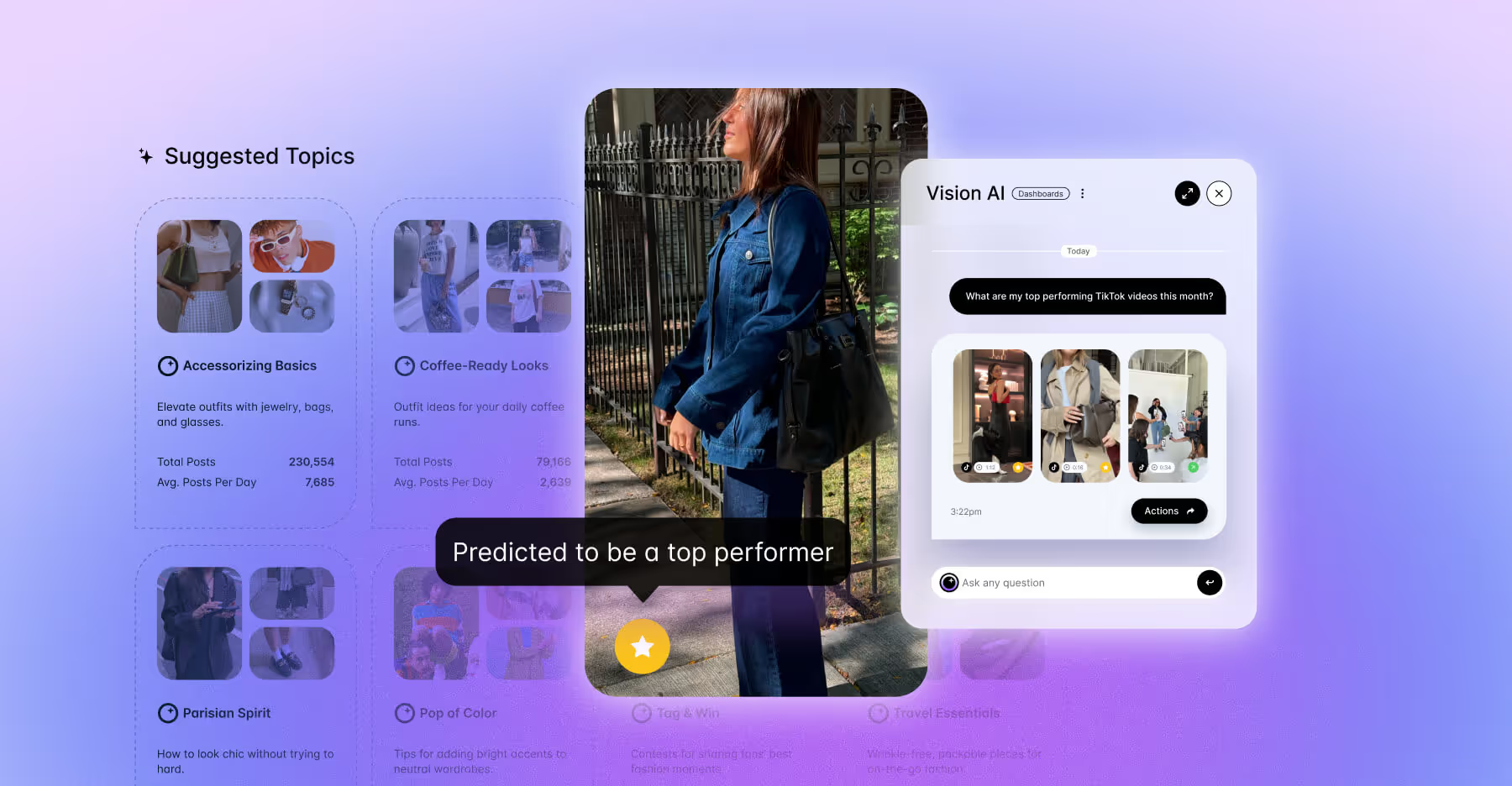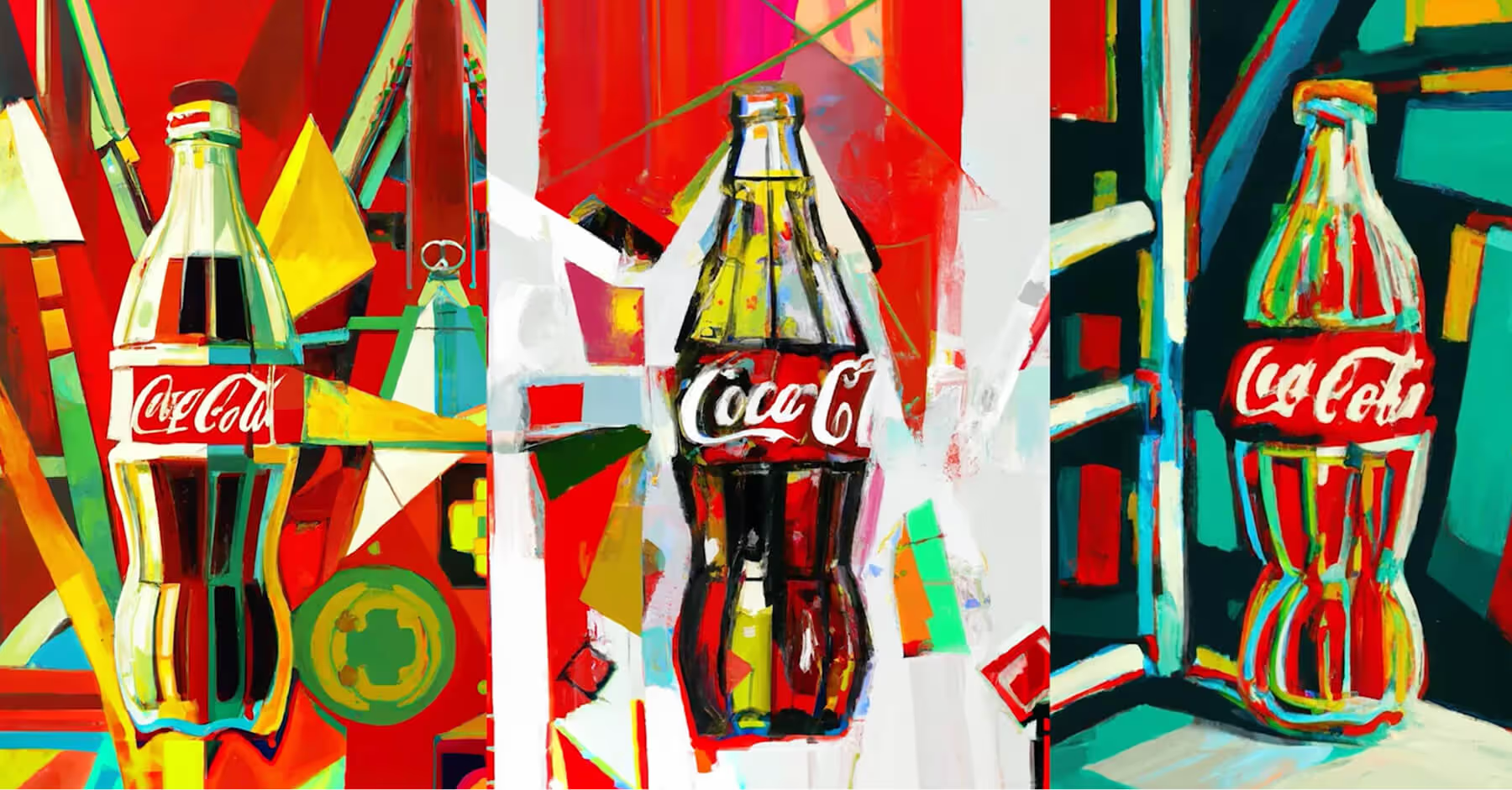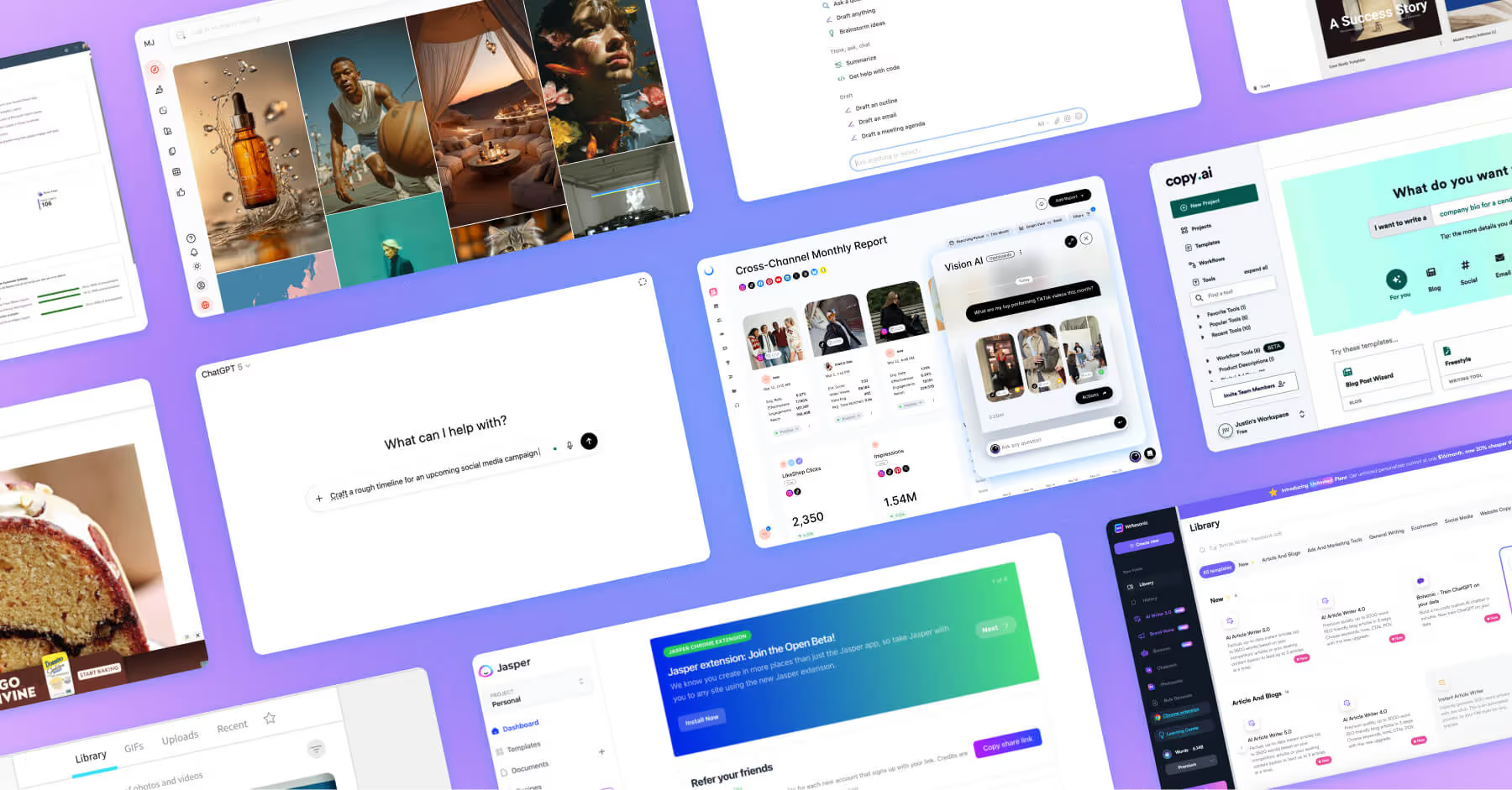Top 10 AI Content Creation Tools for Social and Beyond
We test drove popular AI tools for content creation to see how AI can meaningfully aid content creation.

Does the thought of AI content creation scare your team? While AI can seem daunting, it can be an excellent tool for your team’s success. AI can help streamline workflows, help you make sense of data and more. Don’t think of it as a replacement; think of it as a powerful, customizable tool to help your team create the best content possible.
We’re here to demystify AI content creation, explore the best AI content tools and the following:
- 10 popular AI content creation tools.
- What does AI-generated mean?
- What is AI-generated content?
- How to use AI to create content.
- Will AI replace your social team?
AI Content Creation Tools
We’ve touched on trending AI social media tools here, but what other AI content creation tools — perhaps those floating under the radar — can social marketers learn from? Here are 10 different AI content creation tools marketers can use to build presentations, images and more.
1. ChatGPT
Pros:
- Generates natural, conversational text quickly.
- Can assist with editing, rewriting, and idea generation.
- Adapts to different writing styles and tones.
Cons:
- Lacks fact-checking and may generate inaccurate information.
- Struggles with highly specialized or technical content.
- Requires human oversight for brand consistency.
Best for:
- Engaging copy, customer interaction
What people are saying:
- “Once you use it, you start to understand how to communicate, you will never leave it. I currently use the medium paid version since there is a more expensive one and it has helped me in thousands of things, to program, to solve everyday things with the PC, to do my work better. Now with the update that allows you to share your screen, it is the best, it feels like being with someone real.” - Roque Fabian R., Administrator, Warehousing
Perhaps the most well-known AI tool, ChatGPT generates conversational text for a range of content, like articles, social posts, and customer responses, offering a versatile AI writing assistant that can help you create new content and edit existing text. It’s widely used for brainstorming ideas, summarizing complex topics, and improving overall writing efficiency. Businesses rely on it for automated customer service and quick content drafts.
2. Midjourney
Pros:
- Produces high-quality, unique visuals based on text prompts
- Great for branding and storytelling
- Offers a variety of artistic styles
Cons:
- Requires experimentation to get the desired results
- Can be costly compared to free design tools
- Limited control over small design details
Best for:
- Social media visuals
What people are saying:
- “Midjourney consistently produces visually stunning, high-resolution images that often exceed expectations in terms of detail and quality. Its ability to interpret prompts creatively makes it a fantastic tool for concept art, mood boards, and experimental designs. The outputs have a realistic and professional finish, making it invaluable for generating visuals that can inspire or enhance creative projects.” - Axel N, Fashion and Corporate Photographer, Small Business
Midjourney creates custom visuals based on text prompts, making it ideal for marketers who need unique imagery for storytelling or brand promotion. The tool is particularly popular for creating artistic, high-quality digital artwork that stands out on social media. With its AI-driven creativity, users can generate unique styles that traditional design software may take longer to achieve.
3. Jasper
Pros:
- Optimizes content for SEO
- Supports different content formats like blog posts and ads
- Helps maintain brand voice
Cons:
- Can generate generic or repetitive content without careful inputs
- Requires paid subscription for total functionality
- Editing and human touch still necessary for high-quality content
Best for:
- SEO-optimized blogs, social media
What people are saying:
- “Jasper’s best part are the large amount of templates that make content creation very easy. You can choose a template i.e. a blog or LinkedIn Post and Jasper comes with preconfigured settings for the specific needs. This makes Jasper easier than the usual Large Language models like ChatGPT.” - Nadja H., Application Specialist, Biotechnology
Jasper helps marketers create SEO-optimized long-form content, offering efficient blog writing and social media posts with an emphasis on engagement. The tool integrates AI-powered research and keyword optimization, making it a go-to for content marketers. Its templates and automation features streamline the writing process for teams and individuals alike.
4. DALL-E
Pros:
- Creates detailed, AI-generated images in seconds
- Useful for unique, custom brand visuals
- Eliminates the need for stock photos
Cons:
- Results can be unpredictable and require multiple attempts
- Struggles with fine details and generating realistic human faces and hands
- Licensing and copyright concerns for commercial use
- Style can read as ‘AI-generated’ to audiences
Best for:
- SEO-optimized blogs, social media
What people are saying:
- “The best thing about DALL-E-2 is its natural language processing capability to generate images. This tool is pretty much capable to take human language and process to image-generation commands. I also love its user interface, image editor, and certainly the output.” - HM S., Producer, Small-Business
DALL·E generates high-quality, detailed images from textual descriptions, providing creative assets for visual storytelling on social media or for internal use. It’s particularly useful for brands looking to create custom imagery without relying on stock photos. This is a great tool for brands experimenting with visual styles, or who are lacking a dedicated creative team.
5. Gemini
Pros:
- Integrates with Google’s data ecosystem for accurate insights
- Provides both text and visual generation capabilities
- Helps marketers tailor content to search trends
Cons:
- Can be complex for beginners unfamiliar with AI tools
- Still evolving compared to other AI writing assistants
- Requires strong, detailed prompts for best results
Best for:
- Data-backed content
What people are saying:
- “I have been using Gemini solution via Google work space bundle. It is performing well when we are querying about direct answer queries, but when you're expecting a solution for the complex problem, its answers are generalised. If you expecting in depth analysics solution, it is not the right choice. Apart from that, it is more capable of helping us on our day to day activities.” - Anshajanth Y., Senior Security Engineer, Mid-Market
Google’s Gemini offers a suite of tools that aim to help marketers create data-driven content by integrating text and visual generation. Google’s AI capabilities provide deeper contextual insights for better content personalization. It’s particularly useful for businesses looking to align their marketing with real-time trends and search behaviors.
6. Runway
Pros:
- AI-powered video editing simplifies production
- Accessible to beginners with an intuitive interface
- Speeds up the video creation process
Cons:
- Limited customization compared to professional editing software
- May not handle complex animations or effects well
- Requires strong internet connectivity for cloud-based editing
Best for:
- Video marketing
What people are saying:
- “Runway is one of the best AI tools out there, it is straightforward. I particularly like its image/text-to-video tool which works like a magic wand, It's very easy to implement in my video editing workflow. I use it frequently to create cinematic video shots that later I can incorporate into my timeline to make full-length highly engaging videos that my viewers love.” - Sonu Kumar J., VFX & Animation Artist, Small-Business
Runway assists in video content creation, allowing marketers to easily edit and produce high-quality videos for campaigns. It simplifies complex video editing tasks with AI-powered automation, making it accessible even for non-professionals. The tool is widely used for social media clips, promotional videos, and creative storytelling.
7. Rytr
Pros:
- Generates short, engaging copy quickly
- Supports multiple tones and writing styles
- Affordable compared to other AI tools
Cons:
- Limited for long-form content creation
- Can produce generic or robotic-sounding text
- Requires human editing for brand consistency
Best for:
- Social media posts, ads
What people are saying:
- “It is easy to use and fast. As someone who has to write a lot, I need a way to proofread my work. Proofreading is not my strong suit. Rytr helps as a second pair of eyes to catch my mistakes before I send it out. It is also helpful for outlining.” - S N., Small-Business
Rytr excels in short-form content creation, such as social media captions and ad copy, helping brands churn out engaging content quickly. It’s designed for efficiency, making it a great tool for marketers who need high-quality content at scale. The AI offers multiple tone options, allowing brands to tailor messaging based on their audience.
8. HubSpot
Pros:
- Integrates smoothly with HubSpot’s CRM and marketing tools.
- Provides SEO suggestions to improve content performance.
- Easy to use, even for non-technical marketers.
Cons:
- Content can feel formulaic and less creative.
- Many AI features require a paid subscription.
- Works best for HubSpot users, limiting flexibility.
Best for:
- Blog and email marketing
What people are saying:
- “I like how it is for the most part quite user-friendly and HubSpot Academy is quite informative. I used it from university all the way up until now. I like how everything you need for marketing and customer engagement is in this platform and the price isn't bad compared to other CRMs. Really easy to implement and I actually work for a tech company and integration to our product was seamless.” - Cassidy M., Product Marketing Specialist, Small-Business
HubSpot’s AI content tools assist in blog and social media post generation and integrate seamlessly with its marketing automation tools to help teams streamline campaigns. Its AI-powered suggestions enhance content strategy by aligning with audience engagement metrics. This makes it particularly effective for inbound marketing and customer nurturing.
9. Copy.ai
Pros:
- Generates diverse content types quickly.
- Saves time by creating drafts in seconds.
- Allows customization of tone and style.
Cons:
- Often requires editing for a natural feel.
- Can produce repetitive or generic results.
- Doesn’t verify facts, requiring fact-checking.
Best for:
- Social media, product copy
What people are saying:
- “The most helpful thing about Copy.ai is that it's incredibly accurate. I've used it for a variety of purposes, but I use it almost exclusively for writing blog posts and social media posts, and it consistently delivers material that's well-written, engaging, and on-brand.” - Mncedisi B., Founder, Small-Business
Copy.ai automates content creation for social posts, product descriptions, and email campaigns, allowing marketers to create polished content with ease. It’s a time-saver for teams looking to maintain a consistent brand voice across different platforms. With its AI-powered suggestions, users can quickly generate variations of copy for A/B testing.
10. Beautiful.ai
Pros:
- Automates slide design for polished presentations
- Simplifies data visualization for reports and pitches
- Saves time compared to manual design tools
Cons:
- Limited customization compared to traditional design software
- Requires internet access for cloud-based editing
- May not suit highly complex presentation needs
Best for:
- Infographics, presentations
What people are saying:
- “I like the AI Bot that creates beautiful slides with great visuals. This enables one to create an entire presentation in a short time. It is better than other platforms because of the numerous templates available and the accuracy. The suggestions to shorten or change the tone of the text are also plus.” - Catherine O., Editor, Small-Business
Beautiful.ai automates the design process for presentations, helping marketers create visually compelling slides and infographics with data they provide. The AI ensures layouts are aesthetically pleasing and easy to understand, making presentations more professional and engaging. It’s an excellent tool for businesses looking to streamline their workflow and improve visual storytelling.
What Is AI Generated Content?
AI-generated content includes images, text, recipes and even code generated by AI tools like ChatGPT, Gemini or Midjourney. These systems leverage advanced algorithms to produce content based on human input that can mimic human creativity and intelligence. Often, it also harnesses the information currently available online — great for eliminating lengthy research. AI-generated content has evolved tremendously and is frequently used daily, from recipe creation to helping to draft emails.
How To Use AI To Create Content
Artificial intelligence revolutionizes content creation with tools that streamline workflows and enhance creativity. With AI, social media managers can automate repetitive tasks, generate engaging content more efficiently and spend more time on other projects that require 100% human creativity and nuance. Let's explore how AI can transform your content creation process.
Generate Social Captions
Generating captions is a popular use case for AI social media content creation. Yes, social media captions matter — however, social managers are often pulled in many directions and usually don’t have swaths of extra time to devote to writing witty, enticing captions. While human oversight will always be needed, using AI to provide detailed input can be a huge help when you need to jumpstart some ideas
Brainstorm Content Ideas
Similar to the social media captions we generated above, you can use artificial intelligence to brainstorm content ideas and help spark creativity. To do this, you can input keywords or topics of interest and let the artificial intelligence suggest related ideas or themes that you can use to develop content. One benefit of AI is that you can make your prompt as detailed or as simple as you’d like.
Aid With Content Research
AI can help social and marketing teams analyze and organize large amounts of data quickly and accurately. While we don’t necessarily recommend relying on it to research for you, it can be a game-changer for creating Excel algorithms, predicting future market trends, parsing out specific phrases or keywords in long reports or research papers or even requesting the AI to summarize the most salient points.
Streamlining Content Repurposing
AI tools can take some guesswork from deciding how to repurpose your existing content. From converting a blog post into snippets for social media or turning a video transcript into an email campaign, AI can ensure your messaging remains consistent while saving your team time so your team can spend more time focused on strategic growth.
Proofread Social Captions & Copy
AI can be a great way to proofread social captions and enhance the quality and consistency of your copy. You can mainly use AI to check the grammar and spelling of your social captions to ensure no grammatical errors. It can also benefit grammar in various languages to address your audiences in different regions. Use AI to ensure consistency in language and style across multiple captions and posts on your social media platforms. With AI tools like ChatGPT, you can even build your own custom GPT and program your brand’s voice, style and tone to ensure consistency.
Identify Plagiarism
AI is also a great tool to verify plagiarism to ensure you cite facts properly before publishing your content. AI uses tools that can compare your content against vast databases of online resources, articles and other published materials to ensure your content is cited correctly. It’s important to remember that while ChatGPT is a helpful second ‘set of eyes,’ it’s not a replacement for human oversight — double-check ChatGPT’s output and ensure it’s flagging the correct copy, data points or other inconsistencies it’s noticed.
Predict Performance
AI is a helpful tool for your team to create content. Performance prediction is another aspect of content creation where AI can offer a big lift and ensure you’re sharing the best of the best. Dash Social's Predictive Vision AI uses your historical performance to gauge which content from your library will perform best. In fact, brands analyzed in our social media trends report received 66% higher average engagement rates, 40% higher average reach and 29% more average video views.
Will AI Content Replace Your Social Team?
It is important to understand that AI is not a replacement for your social team. Instead, you must see it as a tremendous aid and enhancement that streamlines the content creation process. This is also important to share with your wider team who might be under the illusion that ChatGPT is always reliable for creating high-quality content that holds value for your business. While challenging, it’s important to manage your team’s AI expectations.
While the brain contains complexities we can’t cover in the span of a short blog section, the brain’s limbic system, specifically the hippocampus and amygdala, are relevant to imagination and creativity. The hippocampus stores and retrieves memories, while the amygdala processes emotions — when working in conjunction, these help you form ideas.
While we can use our brains and creativity to prompt AI to build content, an algorithm is not a substitute for the human subconscious. Overall, AI is a valuable asset that can automate repetitive tasks and provide insight that can save your marketing team time that they can put into other creative aspects of projects.
Post Your Best Content With Dash Social's Visual Intelligence
Dash Social's AI-powered Visual Intelligence suite offers tools to optimize social media presence, including predictive performance analysis, caption generation and data-driven insights. Its predictive capabilities allow brands to forecast the potential success of visual content before posting, ensuring higher engagement. Additionally, the suite helps automate caption generation, saving time and ensuring captions align with the brand’s tone and style for maximum engagement.
Complementing Vision AI, Dash Social's Visual IQ provides a toolkit for in-depth analysis and strategic decision-making. It enables social teams to uncover emerging trends, benchmark against competitors, and segment owned and earned content. The Content Segmentation with Boards feature enhances content even more, by managing and categorizing content, like AI-created content, into segments, so your team can hone in on performance and streamline their posting process.
FAQs
How do you detect AI-written content?
A simple way you can detect AI-written content is through the use of a specialized software tool. A few software programs you can use to detect AI-written text are Grammarly and QuillBot.
How are AI tools making content creation quick and efficient?
AI tools are making content creation quick and efficient in several ways such as proofreading and grammar, scheduling posts and performance analytics. These are just a few of the many tasks AI tools can do to make content creation quick and efficient, saving marketing teams valuable time.







